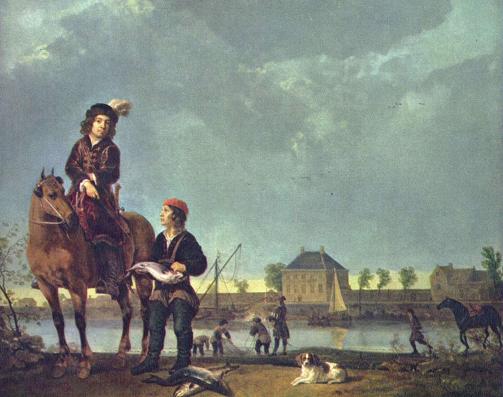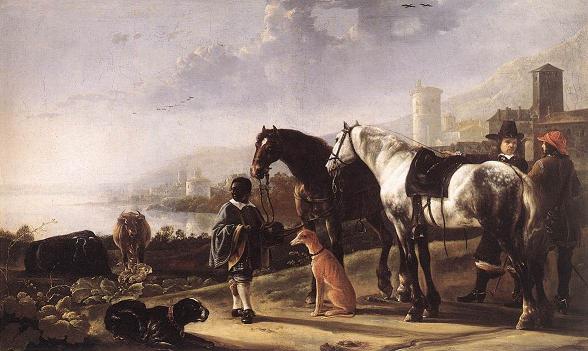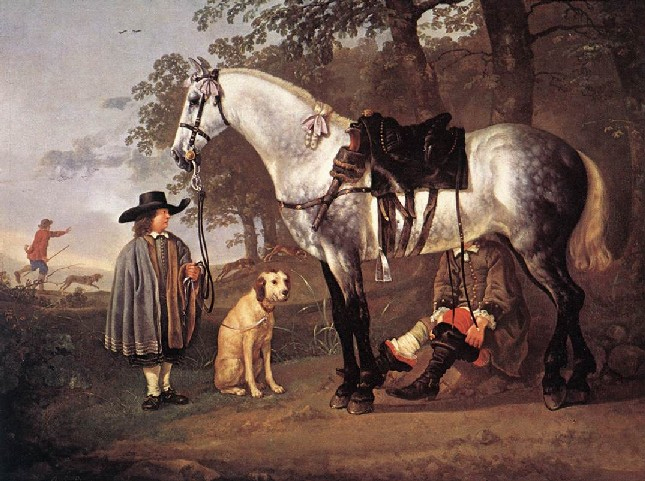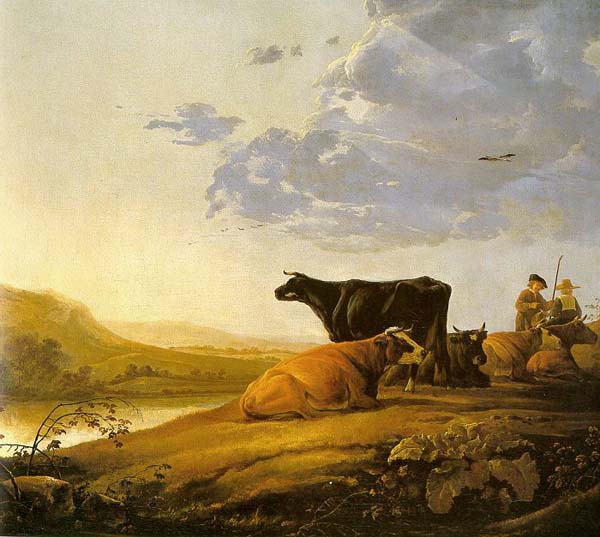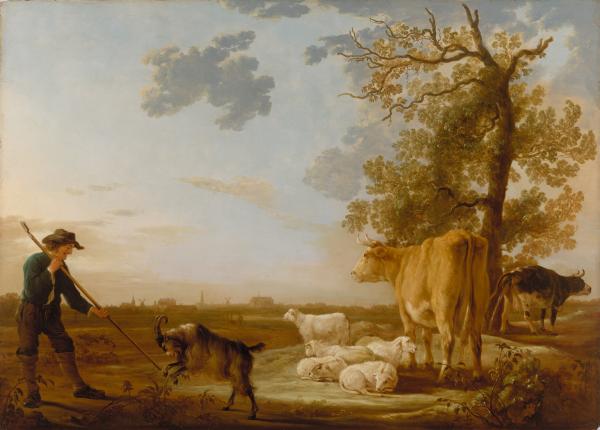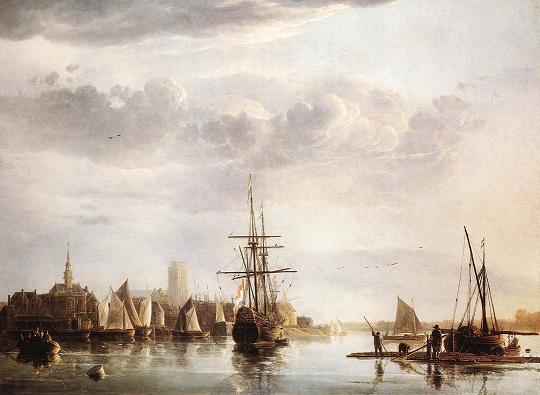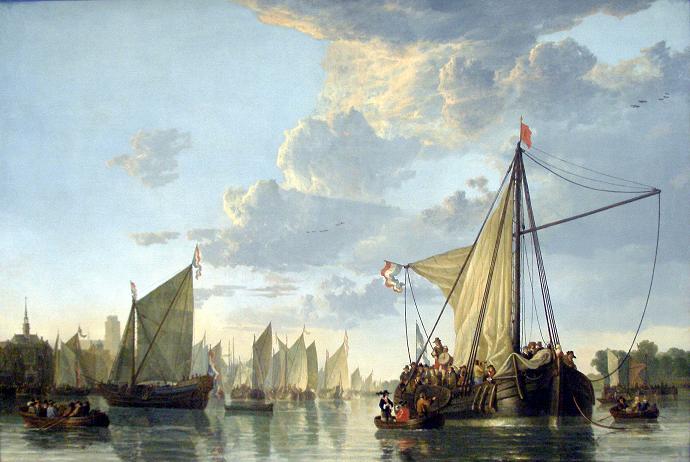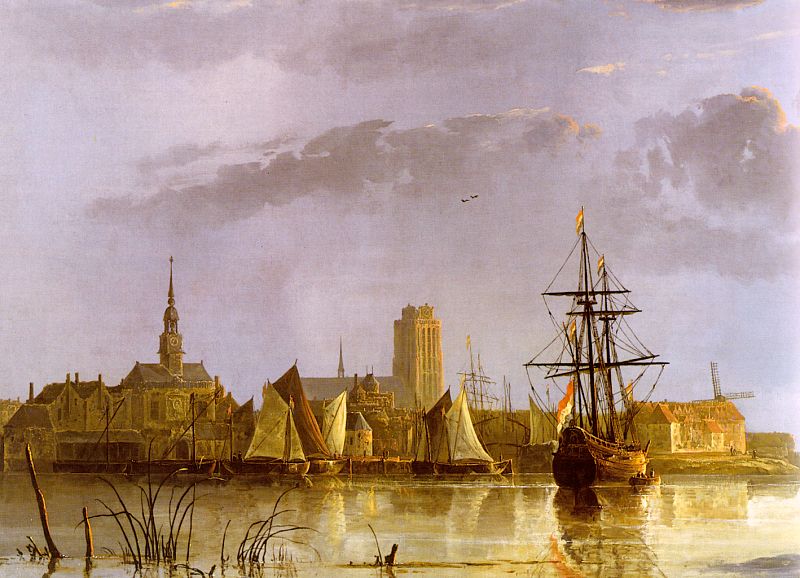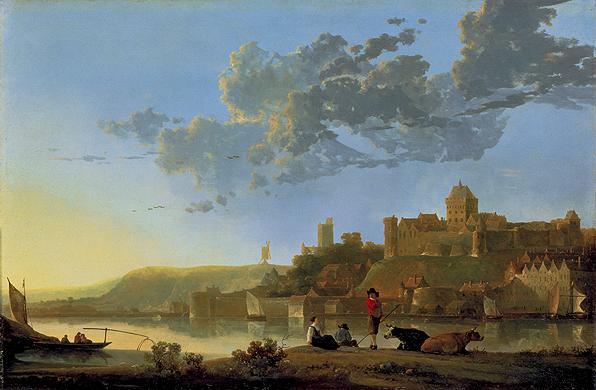<Back to Index>
- Physician Thomas Bartholin, 1616
- Painter Aelbert Jacobsz Cuyp, 1620
- Prime Minister of the United Kingdom Henry John Temple, 3rd Viscount Palmerston, 1784
PAGE SPONSOR
Aelbert Cuyp was born in Dordrecht on October 20, 1620, and also died there on November 15, 1691. Known as the Dutch equivalent of Claude Lorrain, this landscape artist went on to inherit a considerable fortune. His family were all artists, with his uncle and grandfather being glass stainers. Jacob Gerritsz Cuyp, his father, was a portraitist.
Sunlight in his paintings rakes across the panel, accentuating small bits of detail in the golden light. In large, atmospheric panoramas of the countryside, the highlights on a blade of meadow grass, the mane of a tranquil horse, the horn of a dairy cow reclining by a stream, or the tip of a peasant's hat are all caught in a bath of yellow ocher light. The richly varnished medium refracts the rays of light like a jewel as it dissolves into numerous glazed layers. Cuyp's landscapes were based on reality and on his own invention of what an enchanting landscape should be.
Cuyp's drawings reveal him to be a draftsman of superior quality. Light-drenched washes of golden brown ink depict a distant view of the city of Dordrecht or Utrecht. A Cuyp drawing may look like he intended it to be a finished work of art, but it was most likely taken back to the studio and used as a reference for his paintings. Often the same section of a sketch can be found in several different pictures.
Cuyp signed many of his works but rarely dated them, so that a chronology of his career has not been satisfactorily reassembled. A phenomenal number of paintings are ascribed to him, some of which are likely to be by other masters of the golden landscape, such as Abraham Calraet (1642–1722), whose initials A.C. may be mistaken for Cuyp's.
However, not everyone appreciates his work and River Landscape (1660), despite being widely regarded as amongst his best work, has been described as having "chocolate box blandness".
After
he married Cornelia Boschman in 1658, the number of works produced by
him declined almost to nothing. This may have been because his wife was
a very religious woman and a very big patron of the arts. It could also
be that he became more active in the church under his wife's guidance.
He was also active as deacon and elder of the Reformed Church, and a
member of the high court of Holland.
